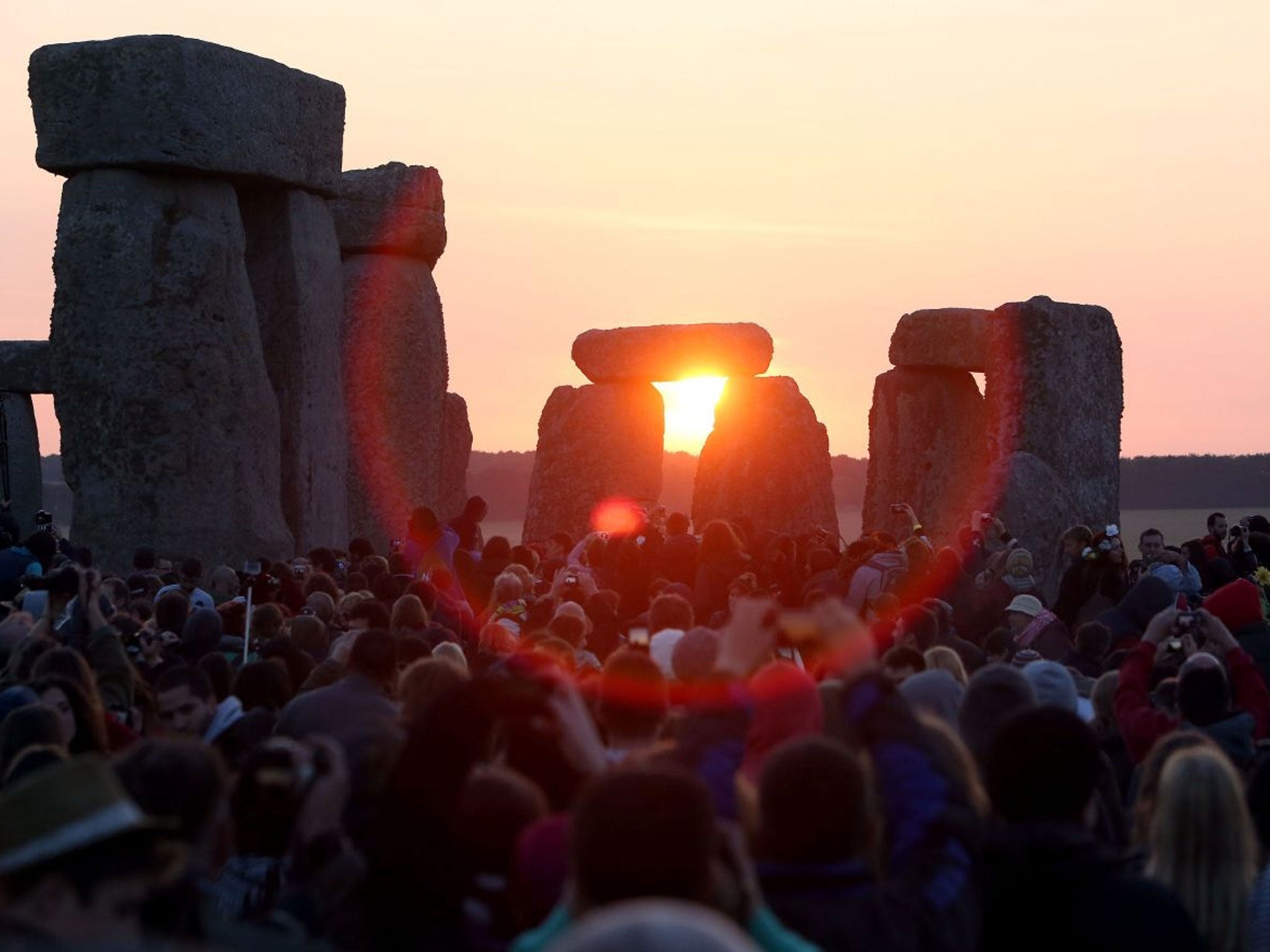Your support helps us to tell the story
From reproductive rights to climate change to Big Tech, The Independent is on the ground when the story is developing. Whether it's investigating the financials of Elon Musk's pro-Trump PAC or producing our latest documentary, 'The A Word', which shines a light on the American women fighting for reproductive rights, we know how important it is to parse out the facts from the messaging.
At such a critical moment in US history, we need reporters on the ground. Your donation allows us to keep sending journalists to speak to both sides of the story.
The Independent is trusted by Americans across the entire political spectrum. And unlike many other quality news outlets, we choose not to lock Americans out of our reporting and analysis with paywalls. We believe quality journalism should be available to everyone, paid for by those who can afford it.
Your support makes all the difference.Last night, thousands descended on Stonehenge to mark the summer solstice. But what, and why, were they gathering to celebrate?
What is the summer solstice?
‘Solstice’ literally means stopping or standing still of the sun. It is used as a name for the longest day of the year – 21 June – when the sun is at its highest point in the northern hemisphere.
The sun reaches its highest position in the sky twice a year as seen from the north or south pole. This is when either hemisphere is tipped towards the sun more than on any other day of the year.
The day of the solstice has the longest period of sunlight in the calendar year (16 hours and 38 minutes in London). The only exception is in polar regions, where daylight can last for days or months.
Does it happen everywhere on the same day?
No. In the northern hemisphere, the summer solstice takes place between June 22 and June 22. But in the southern hemisphere, the solstice occurs between December 20 and December 23.
The term ‘midsummer’ is used to refer to the day on which solstice occurs.
How much sunlight do we actually get?
In London the sun will rise at 4.43am and set at 9.21pm today – which gives us 16 hours and 38 minutes of daylight.
Why is it celebrated?
The summer solstice is celebrated by thousands of pagans across the world who believe in the sun’s power and celebrate summer for its association with life and fertility. Pagans, and also Celts, traditionally light bonfires to add to the sun’s energy.
Although latter-day Druids and Pagans have always celebrated the solstice, the gathering at Stonehenge only started in the 20th century when English Heritage opened the site to sun worshippers. In the UK, druids don white robes while other countries put on traditional costumes and perform elaborate dances.

Join our commenting forum
Join thought-provoking conversations, follow other Independent readers and see their replies
Comments